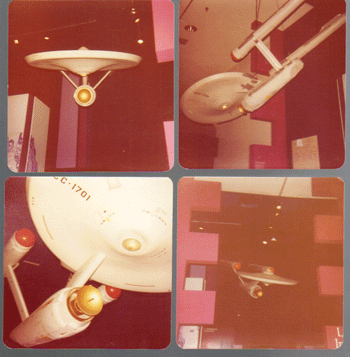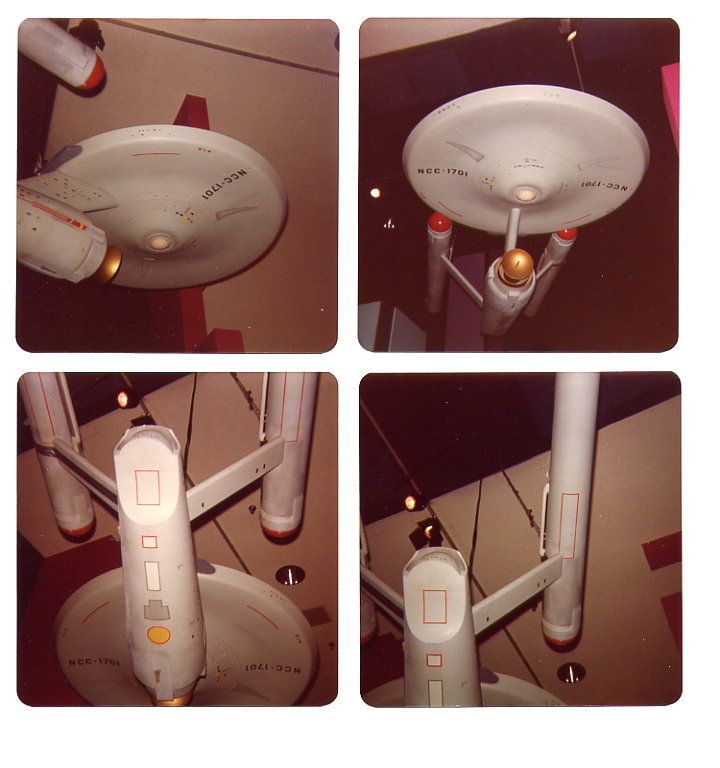...most of the model painted over with primer grey.
That's bull. That was the original color, unless you seriously want to claim, that all the original markings down to the small print at the saucer's underside were painstakingly recreated after such a previous paint job.
Sorry, no. The only part of the ship that was not repainted - and more than once - was the top surface of the saucer, the bridge and the teardrop-shaped bubble it rests on. That's just the truth. I know; you don't.
It always is; it always is.
Nonetheless, that would be the appropriate response for an effort, undertaken for the relative pittance that NASM was willing to "invest," that rescued the "precious shrine" from a future in storage or the scrap heap.
And, no doubt, it can be repainted in a flat grey again...
Exactly. It's a
paint job, undertaken during the process of saving the model from ongoing deterioration and decades of neglect.
But all some people have done for two decades is kvetch and whine about it.
There are some other minor inaccuracies in the restoration, BTW. The research the museum had undertaken on the model was limited. When they started out they didn't even know who had built it.
No, as far as I know, the model went from the ceiling of the flight exhibit, to off-display (November 1991-August 1992), and then to the lower level of the gift shop, fully restored.
If he saw it in 1990 before the big anniversary
Star Trek exhibit that included all the props and costumes then he saw it pre-restoration. It did look, as he says, terrible. It was always being moved from one place to another to make way for more important exhibits. Toward the last they stopped running the internal lights, just taping up the opening on the port side where the cable was run out to a power source.
The spinning nacelle effect never worked prior to the Miarecki restoration. The model arrived at NASM with the nacelle caps smashed and the mechanism broken; they put painted domes on the nacelles, plugged in the cables and whatever lights happened to be working were what they used. At one point I think they did stick some flashing light bulbs behind the domes.
After the annversary exhibit ended the ship went on a national tour with many of the other elements of the exhibit. It was displayed suspended from cables attached to a plexiglass "cradle" to support the saucer and nacelles. The cradle was custom fabricated by a company near College Park, MD.
AFAIK, the cradle support system hasn't been used at any time since the model was returned to display at NASM. That's somewhat a shame, because the model is disintegrating again. It's not immediately evident, certainly not in all photos, but the saucer is sagging forward of its own weight; the nacelles are sagging out of alignment; laminate is peeling off bits like the impulse engines and windows are slipping out of place. This model wasn't built to last fifty years. The materials used were too heavy and not strong enough to support it.
Really the only thing that would stabilize it long-term would be to tear it apart and build it up on a metal armature - essentially, using the "skin" - which would be mega expensive and might violate the museum's archival standards.
Will the Smithsonian spend big bucks to rescue this thing a second time? Don't hold your breath.








